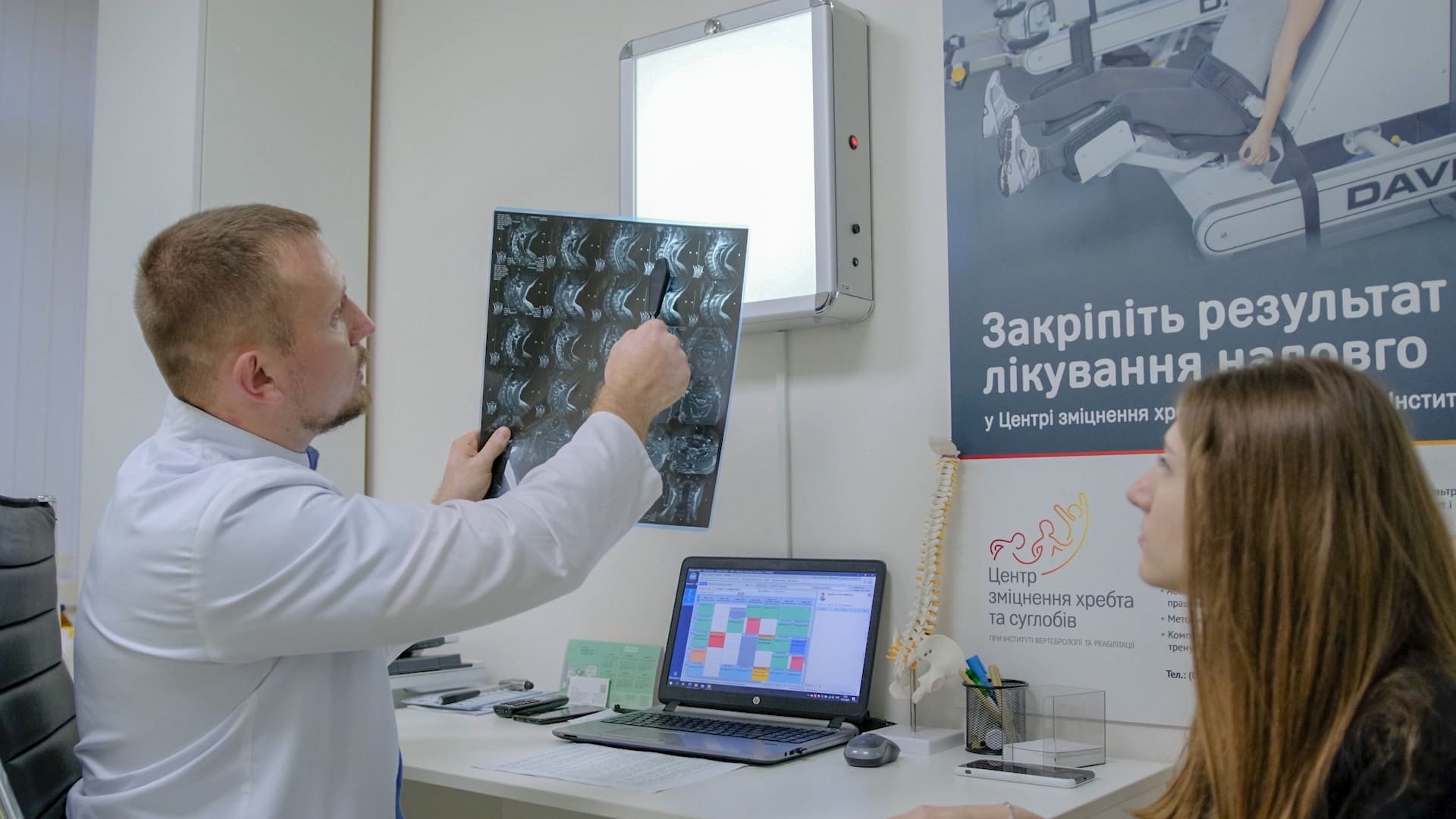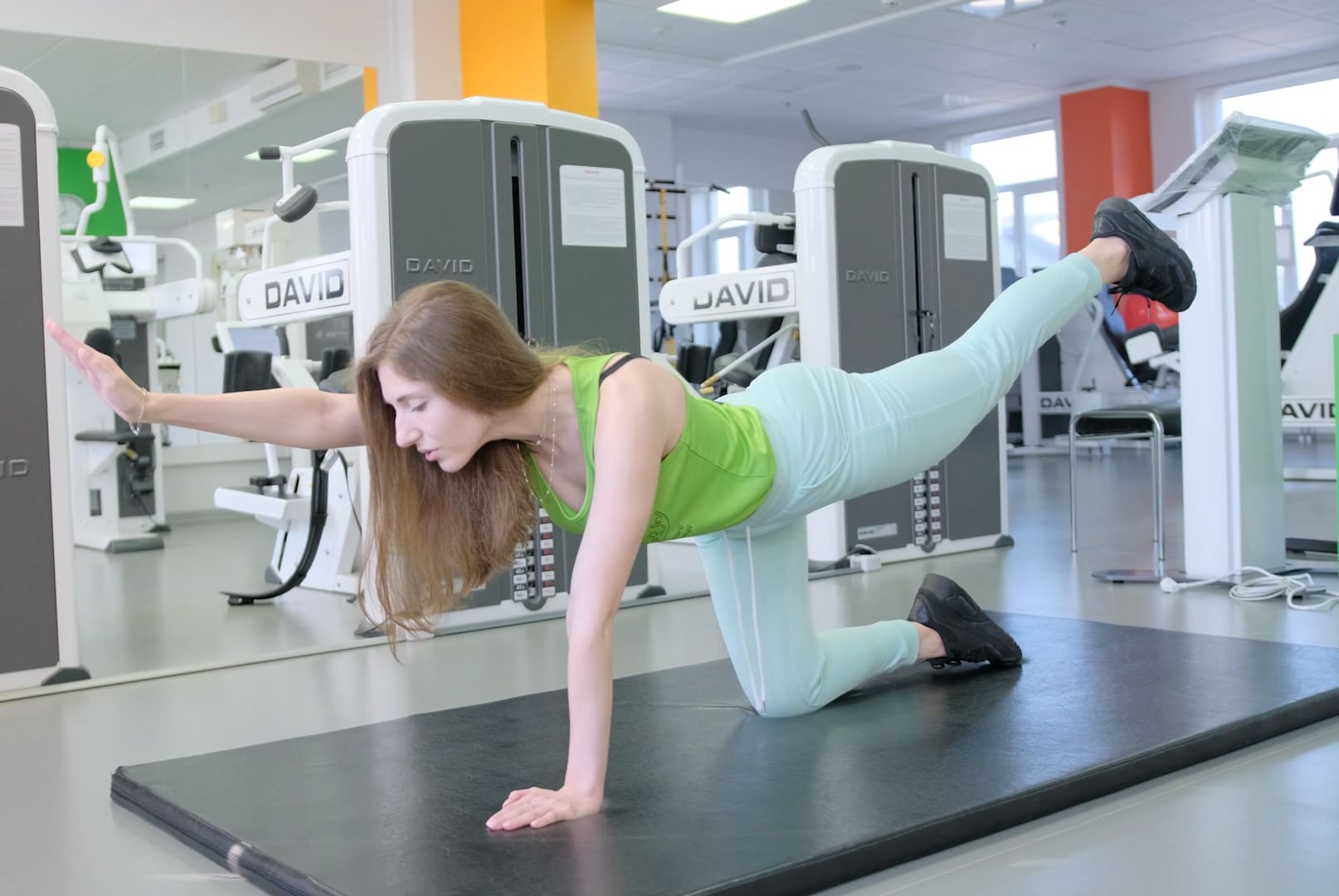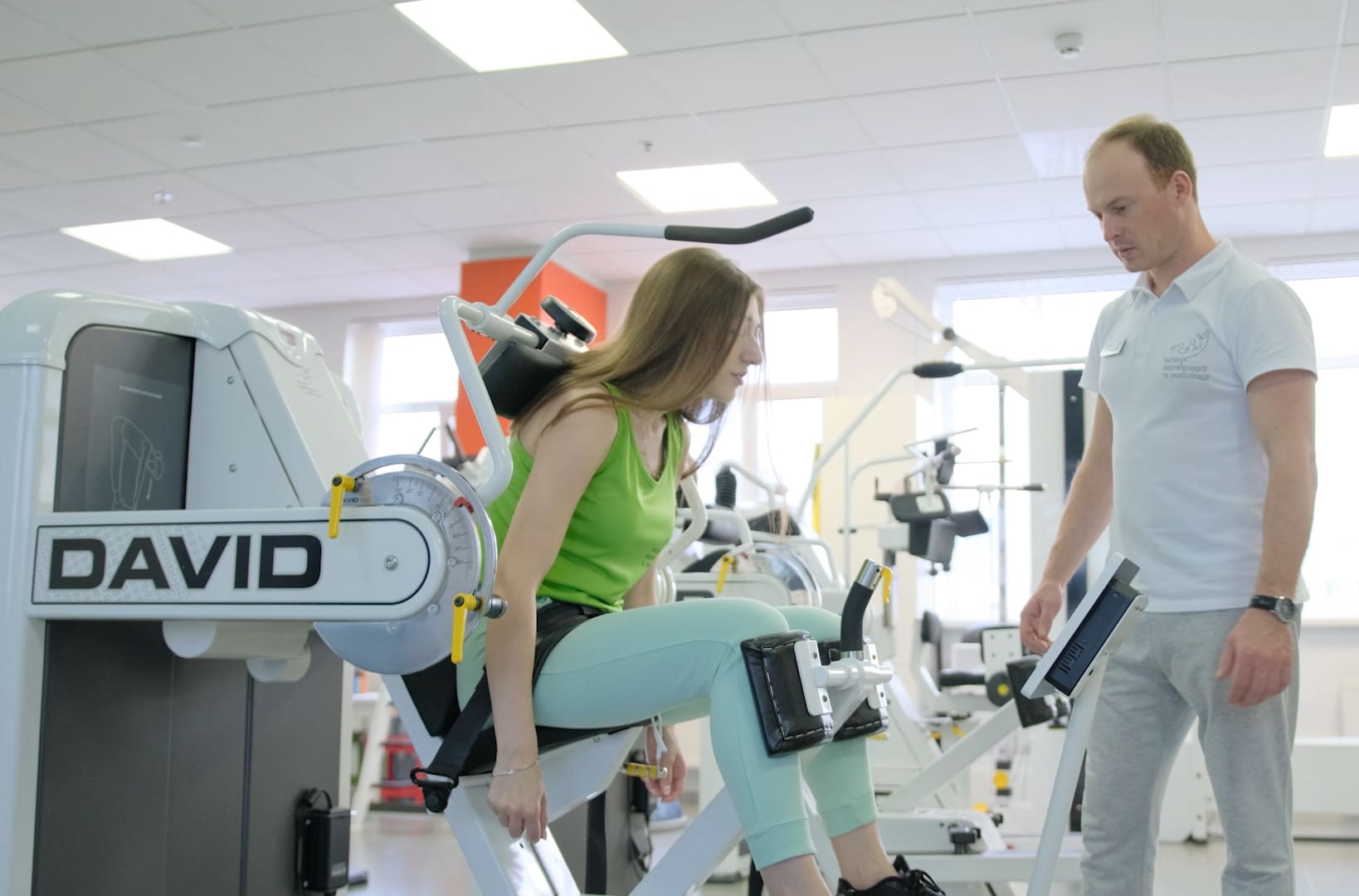We repair disc herniation without surgery in 95% of the cases. Our key principle for treatment of hernia without surgery is to improve nutrition of intervertebral discs for their natural regeneration.
For this purpose we apply a complex of methods: of spinal correction through the short lever method, massage therapy, movement treatment on David simulators and physiotherapy. Our doctors select the range of treatment options for each patient individually, depending on their condition.

What are the symptoms of disc herniation?
A herniated cervical spine is characterized by symptoms such as neck pains, which shoots to the arm, thorax and shoulder girdle. Disturbed cerebral blood flow may cause headaches, severe weakness and dizziness.
A herniated thoracic spine is characterized by the compression of the spinal cord and its roots, which leads to pains in the chest, between the ribs and the back.
A herniated lumbar spine is characterized by chronic pain in the lower back, which increases when performing any physical activity. The pain may transfer to the hip, calf, legs and even feet and numbness and tingling in the legs may appear.
Conservative treatment of disc herniation at the Institute of Vertebrology and Rehabilitation
At the initial stages, a herniated intervertebral disc can cause functional blocks, i.e. the immobility of certain parts of the spine. Therefore, in the early stages of the disease it is good if the doctor applies the spinal correction method through the short lever method, as a result of which the immobility of the spinal segments is effectively removed.
Massage therapy helps to eliminate muscle spasms, which have a negative impact on the degenerative changes of the disc and also improves blood circulation in the disc.
Physical therapy procedures, including laser treatments, improve the nutrition of intervertebral discs that contributes to a reduction in the hernia size, which is especially important at the later stages of hernia development, when the patient experiences strong pain.
How disc herniation is treated by motion at the Institute’s Center of Spine and Joint Strengthening?
To consolidate the results for a long period of time, at our Institute’s Center of Spine Strengthening and Joint Rehabilitation we use the German and Finnish movement treatment technique using high-tech David simulators. Our medical simulators are equipped with a built-in computer control system, special retainers for non-target muscle movement that make the sessions as safe as possible for the back. All sessions are held under the supervision experienced rehabilitators and a qualified therapist.
How we perform rehabilitation after surgery for a disc herniation?
At our Institute, we also offer a rehabilitation course after surgical treatment of hernia, which usually includes a course of rehabilitative massage therapy, and magnetic-laser therapy for rehabilitation as well. The rehabilitation process is carried out under the constant supervision of a doctor, and not earlier than 1-3 months following the surgery.
And in 4 months after surgery, you can also receive rehabilitation using movement treatment at the Center of Spine Strengthening and Joint Rehabilitation.
If we see that a person in his situation can’t avoid surgery, so in these rare cases we do not offer the conservative treatment, but recommend to visit a specialized clinic for diagnosis and, if necessary, for surgical intervention.
The objectives of rehabilitation:
- to restore the motor activity;
- to recover the locomotor function;
- to eliminate residual neurological complications;
- to strengthen the muscular frame.
The rehabilitation period after removal of disc herniation is a period, during which patients try to return to everyday life after back surgeries. Restoration of the muscular system supporting human spine is the main objective for the rehabilitation period.

Rehabilitation after removal of disc herniation at the Institute of Vertebrology and Rehabilitation
The programs of rehabilitation after removal of disc herniation are developed by professionals at the Institute of Vertebrology and Rehabilitation for every patient individually. The programs are aimed at full restoration of integrity of musculoskeletal system and typically consist of three stages.
-
The first 2 weeks after surgery. During this period, doctors aim all efforts at elimination of pain and subsidence of edema. Intensive medication-based treatment and preventive procedures are used to prevent possible post-operative complications. Doctors also prescribe orthopedic support corsets to prevent displacement of the vertebrae and promote rapid healing of stitches.
-
From 2 weeks to 2 months. During this period, our doctors help with patients’ adaptation and recommend basic therapeutic exercises, gymnastics and physiotherapy after surgeries for removal of disc herniation.
-
From 2 months to 1 year after surgery. During this period, our professionals work on full recovery of injured spine areas, prevention of pathological changes in patients’ bodies, and strengthening of the muscular system in the back
Then, preventive procedures are necessary throughout life. In particular, patients should undergo periodical diagnostics to monitor condition of the entire musculoskeletal system.

During the entire rehabilitation period after removal of disc herniation, doctors at the Institute of Vertebrology and Rehabilitation use:
-
Medications (pain, swelling and inflammation relief).
-
Physiotherapy (electrotherapy, laser therapy, ultrasonic therapy).
-
Therapeutic massage.
-
Remedial gymnastics.
All procedures help restore the structure of bone and cartilage tissues, improve blood circulation processes, as well as increase and develop the tone and elasticity of the back muscles.
Starting with the 3rd month after the surgery, you are welcome to undergo rehabilitation treatment at our Center for Spine Strengthening and Joint Rehabilitation with the help of innovative professional David medical stimulators. Based on results of extensive computer testing our physicians develop individual exercise routines with David training devices for each patient.
The Finnish-German David method makes controlled and safe loads on muscles possible for recovery after removal of disc herniation in the lumbar and other back segments.
